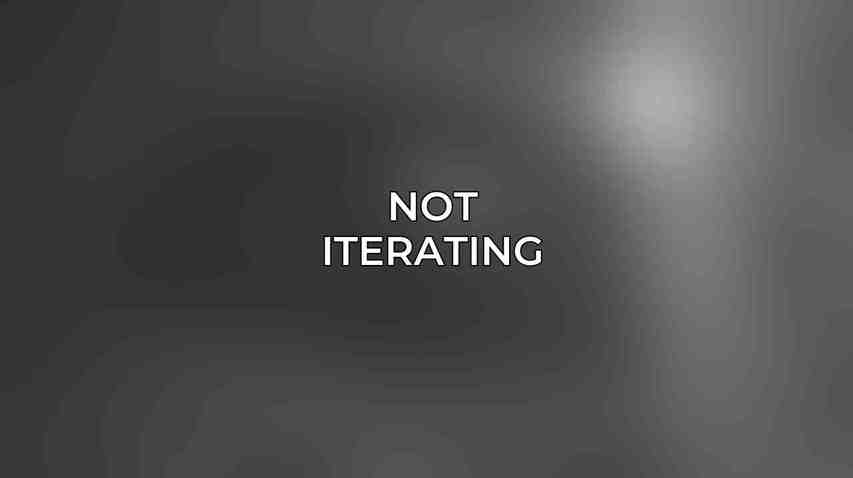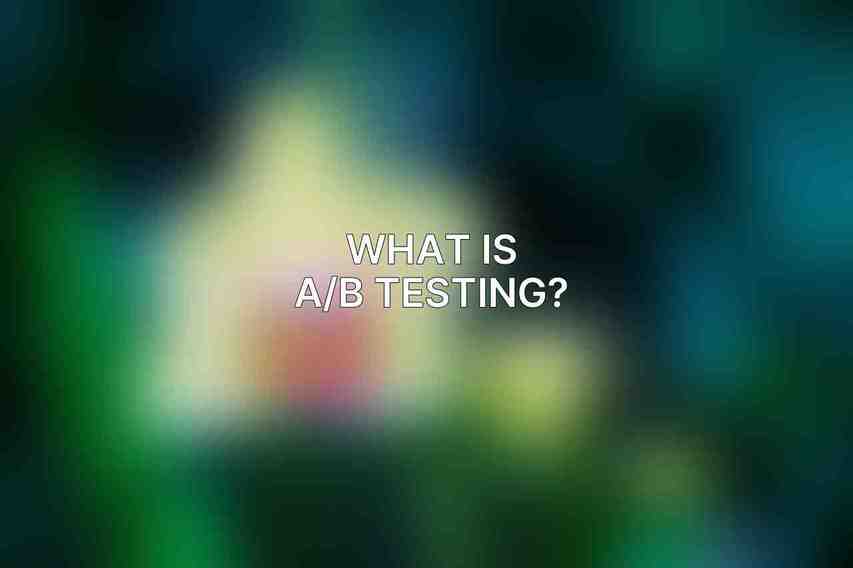A/B testing, also known as split testing, is a powerful method used by marketers to compare two versions of a webpage or app to determine which one performs better. It is a vital tool for data-driven decision-making in optimizing marketing campaigns to drive conversion rates and improve user experience. However, to extract accurate and actionable insights from A/B testing, it is crucial to avoid common mistakes that can skew results and lead to misguided decisions. Read more about this on Mastering A/B Test Analysis with Thrive Themes: Unlocking Insights for Growth
Common A/B Testing Mistakes
Inadequate Sample Size
One of the most common mistakes in A/B testing is having an inadequate sample size. When the sample size is too small, it can lead to unreliable results that are not statistically significant. To avoid this mistake, it is essential to calculate the minimum sample size required based on the expected conversion rate and the desired level of statistical significance. Learn more about Success Stories: A/B Testing with Thrive Themes That Transformed Businesses
Short Testing Duration
Another prevalent mistake is running A/B tests for a short duration. Short testing periods do not allow enough time to gather sufficient data, especially for low-volume campaigns. To avoid this mistake, it is crucial to allow the test to run for an appropriate duration to ensure reliable and meaningful results.
Lack of Randomization
Failure to randomize the allocation of users to different test variations can result in biased results. Unequal distribution of test groups can skew the outcomes of the test. To prevent this, it is important to use a randomizer to evenly split traffic between test variations and ensure the validity of the results. Explore further with Ultimate Guide to A/B Testing for Higher Conversions with Thrive Themes
Concurrent Tests
Running multiple A/B tests simultaneously can lead to conflicting and inaccurate results. Interfering variables from concurrent tests can make it challenging to isolate the impact of each change. To avoid this, it is recommended to run tests consecutively or use multivariate testing to control variables and obtain reliable results.
Lack of Clear Hypothesis
Testing without a clear hypothesis or goal in mind can result in inconclusive and irrelevant outcomes. It is essential to define a specific hypothesis and identify the variables to test to address the hypothesis effectively. Having a clear hypothesis provides direction and purpose to the A/B testing process.
Unclear Analysis
Misinterpreting A/B test results due to poor analysis methods can lead to faulty conclusions. To avoid misunderstanding the data, it is crucial to use statistical significance tests such as t-tests or chi-square tests to evaluate the results accurately. Proper analysis ensures that decisions are based on valid and reliable data. Explore further with A Comprehensive Guide on Analyzing A/B Testing Results for Maximum Impact
Neglecting Seasonality
Ignoring seasonal fluctuations or events can impact the accuracy of A/B test results. Seasonal factors can influence user behavior and skew the outcomes of the test. To mitigate this issue, it is important to consider the timing of the test, account for seasonality, and adjust the testing strategy accordingly.
Small Changes
Testing insignificant or minor changes that do not have a substantial impact on user behavior can lead to inconclusive results. To avoid this mistake, it is crucial to test substantial changes that are likely to influence conversions and provide meaningful insights for optimization.
Ignoring User Feedback
Failing to collect and incorporate user feedback during the testing process can result in missed opportunities for improvement. User insights can uncover valuable information that can enhance the testing strategy and lead to better outcomes. To avoid this mistake, it is recommended to gather user feedback through surveys, interviews, or usability testing. Find more on Elevate Your Website with Advanced A/B Testing Techniques via Thrive Themes
Not Iterating

Neglecting to iterate and evolve the testing process can lead to stagnation and missed optimization opportunities. Continuous analysis of results and iterative testing are essential for refining the testing strategy and improving performance over time. It is critical to adapt based on the insights gained from each test to drive continuous improvement.
avoiding common A/B testing mistakes is paramount in maximizing the value of testing and generating accurate insights for informed decision-making. By following best practices and implementing strategies to prevent these errors, marketers can ensure that their A/B testing efforts result in actionable outcomes that drive business success. It is essential to prioritize thorough planning, clear hypotheses, proper analysis, and user feedback to optimize A/B testing campaigns effectively.
Implementing these strategies will not only help avoid pitfalls in A/B testing but also lead to improved campaign performance, enhanced user experiences, and increased conversions. Embracing a data-driven approach and paying attention to the details of A/B testing can make a significant difference in achieving marketing objectives and staying ahead in a competitive digital world. Let’s strive to learn from these mistakes and continuously refine our A/B testing strategies for optimal results.
Frequently Asked Questions
What is A/B testing?

A/B testing is a method of comparing two versions of a webpage or app against each other to determine which one performs better.
What are some common mistakes in A/B testing?
Some common mistakes in A/B testing include not setting clear goals, testing multiple variables at once, and not running experiments for a long enough period.
How can I avoid making mistakes in A/B testing?
To avoid making mistakes in A/B testing, it is important to clearly define your goals, test one variable at a time, and run experiments for a long enough period to draw valid conclusions.
What is the impact of making mistakes in A/B testing?
Making mistakes in A/B testing can lead to inaccurate results, wasted resources, and missed opportunities for optimization and improvement. Dive deeper into How to Set Up Your First A/B Test with Thrive Themes: A Step-by-Step Guide
Can you provide examples of successful A/B testing strategies?
Successful A/B testing strategies include testing small changes that have a big impact, using statistical significance to determine results, and iterating based on data-driven insights.

